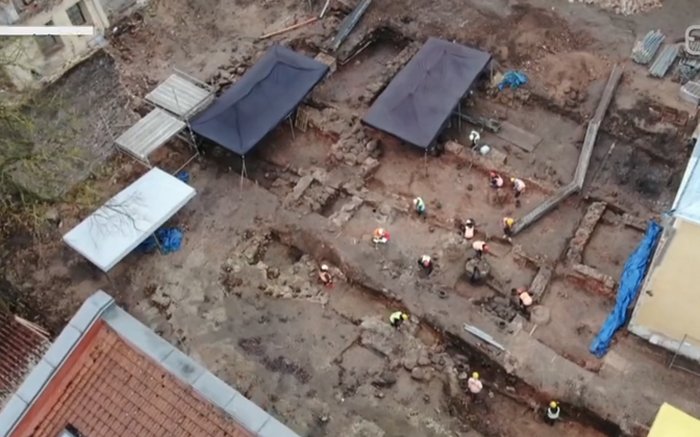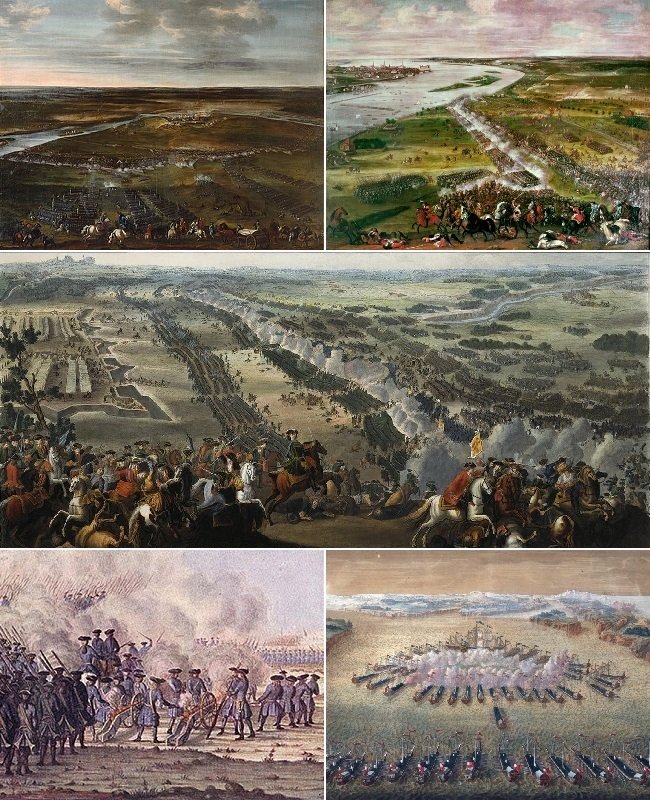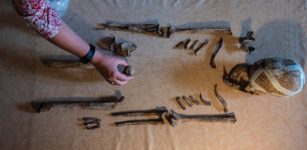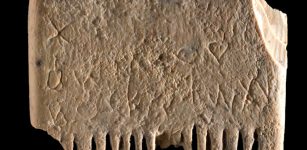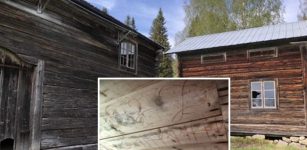Medieval City Dating Back To The Great Northern War Discovered In Tartu, Estonia
Jan Bartek - AncientPages.com - Archaeologists excavating in Tartu in Estonia have discovered a Medieval city dating back to the Great Northern War.
Tartu, the oldest city of Estonia was demolished in the Great Northern War, but the walls remained.
Many countries were involved in the Great Northern War (1700–1721) when an alliance of Denmark–Norway, Saxony, and Russia declared war on the Swedish Empire.
Excavations on the new building of the University of Tartu. Credit: ERR
Sweden was at the time ruled by a fifteen-year-old King Charles XII. He was seen as a soft target, by the attacking nation. By the end of the war, Sweden had lost supremacy as the leading power in the Baltic region and was replaced by Peter the Great’s Russia. With the Capitulation of Estonia and Livonia, the Swedish dominions Estonia and Livonia were integrated into the Russian Empire.
The remains of the Medieval city were “discovered during the construction of a building for the University of Tartu in Tartu city center.
Behind the main building of the University of Tartu, on the corner of Jakobi and Munga streets, construction has been ongoing for a year. Archaeologists are busy as well because after the removal of the asphalt layer, walls of houses from the medieval and early modern times were revealed,” Err reports.
“The study area is several thousand square meters. Basically, when Tartu was destroyed in the Great Northern War, the walls remained. So to say, we opened an early modern time capsule, the whole quarter has remained exactly the same as it was in 1708 when it was destroyed," archaeologist Rivo Bernotas said.
The recent archaeological in the city of Tartu shed light on historical events that occurred during the Great Northern War.
Great Northern War, clockwise from top: Battle of Narva 1700, Düna 1701, Poltava 1709, Gadebusch 1712, Gangut 1714. Credit: Public Domain
Scientists are excited because they found more than expected at the site. Ass Err reports, “besides the walls, several smaller findings have been discovered. For example, a commemorative token from 1545, distributed during the Jodokus von der Recke's consecration ceremony on becoming the bishop of Tartu, which has never been found before in Estonia.
"We have found several hypocaust ovens, which was a medieval heating system. We have found waste from other ovens, all possible household items," Bernotas said.
See also: More Archaeology News
A lot of animal and fish bones have also been found, which allow for the studying of the eating and livestock habits of a medieval resident of Tartu. Bernotas said the best findings are probably three-four meters deeper from the layer currently studied.
"It's always a great and exciting feeling to contribute to another piece of the historical puzzle. It doesn't happen every day that you get to study several thousand square meters of the old town's heritage reserve area," Bernotas noted.
Written by Jan Bartek - AncientPages.com Staff Writer

